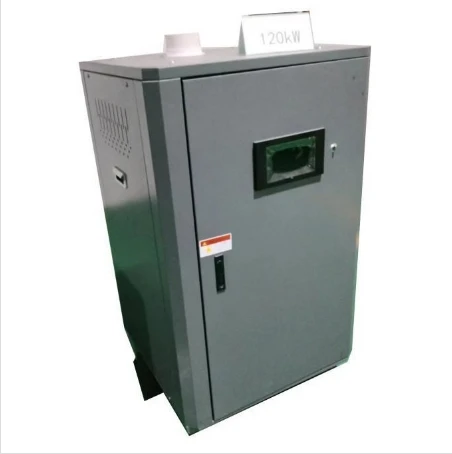- Afrikaans
- Albanian
- Amharic
- Arabic
- Armenian
- Azerbaijani
- Basque
- Belarusian
- Bengali
- Bosnian
- Bulgarian
- Catalan
- Cebuano
- China
- China (Taiwan)
- Corsican
- Croatian
- Czech
- Danish
- Dutch
- English
- Esperanto
- Estonian
- Finnish
- French
- Frisian
- Galician
- Georgian
- German
- Greek
- Gujarati
- Haitian Creole
- hausa
- hawaiian
- Hebrew
- Hindi
- Miao
- Hungarian
- Icelandic
- igbo
- Indonesian
- irish
- Italian
- Japanese
- Javanese
- Kannada
- kazakh
- Khmer
- Rwandese
- Korean
- Kurdish
- Kyrgyz
- Lao
- Latin
- Latvian
- Lithuanian
- Luxembourgish
- Macedonian
- Malgashi
- Malay
- Malayalam
- Maltese
- Maori
- Marathi
- Mongolian
- Myanmar
- Nepali
- Norwegian
- Norwegian
- Occitan
- Pashto
- Persian
- Polish
- Portuguese
- Punjabi
- Romanian
- Russian
- Samoan
- Scottish Gaelic
- Serbian
- Sesotho
- Shona
- Sindhi
- Sinhala
- Slovak
- Slovenian
- Somali
- Spanish
- Sundanese
- Swahili
- Swedish
- Tagalog
- Tajik
- Tamil
- Tatar
- Telugu
- Thai
- Turkish
- Turkmen
- Ukrainian
- Urdu
- Uighur
- Uzbek
- Vietnamese
- Welsh
- Bantu
- Yiddish
- Yoruba
- Zulu
Nov . 30, 2024 11:55 Back to list
Exploring the Applications and Innovations in Machine Base Casting Techniques
Understanding Machine Base Casting Fundamentals and Importance
Machine base casting is a crucial component in the manufacturing and engineering sectors, serving as the foundation for various types of machinery. It refers to the process of creating a large, durable casting used to support and house the main operating components of machines. Due to their significance, understanding the nuances of machine base casting is essential for engineers, manufacturers, and maintenance personnel alike.
The Basics of Machine Base Casting
At its core, machine base casting utilizes a casting process (often iron or steel) to produce robust structures. This method offers various benefits, including the ability to create complex geometries, excellent durability, and sufficient weight to absorb vibrations. The casting process typically involves melting the metal, pouring it into a mold, and allowing it to solidify, which results in components that possess high rigidity and stability.
Machine bases are often designed with several features, such as mounting surfaces, channels for coolant flow, and even integrated structural elements that enhance the overall performance of the machine. These features must be meticulously designed to ensure compatibility with other machine parts and to facilitate proper assembly and maintenance.
Key Materials Used
The choice of material in machine base casting is vital to the performance and longevity of the machine
. Common materials include1. Gray Iron This is one of the most widely used materials for machine bases due to its excellent damping capacity, machinability, and relative cost-effectiveness. Gray iron absorbs vibrations well, making it suitable for precision machinery.
2. Ductile Iron Known for its higher tensile strength compared to gray iron, ductile iron is another popular material. It provides durability and resilience against impact, which is crucial for heavy machinery applications.
3. Steel Alloys For applications requiring superior strength and toughness, alloy steels are often used. These materials can withstand extreme conditions but typically come at a higher cost.
machine base casting

4. Aluminum Alloys In lightweight applications where weight is a concern, aluminum castings may be used. While not as strong as iron or steel, aluminum offers excellent corrosion resistance and is easier to machine.
The Design Process
The design of a machine base casting requires careful consideration of several factors, including the intended load, vibration resistance, and thermal dissipation. Engineers utilize Computer-Aided Design (CAD) software to create detailed models of the machine base. These models are then analyzed using Finite Element Analysis (FEA) to predict how the design will perform under various conditions.
Additionally, designing the cooling channels and integrating mounts for components such as motors and bearings is crucial for the effective operation of the machine. Properly engineered machine bases contribute to the overall efficiency and productivity of manufacturing processes by minimizing downtime and maintenance requirements.
Manufacturing Considerations
The manufacturing process of machine base castings can vary significantly depending on the complexity and volume of the anticipated production. For high-volume production, sand casting is often employed due to its flexibility and cost-effectiveness. In contrast, investment casting might be chosen for lower volumes but higher precision requirements.
Quality control is paramount throughout the casting process. Techniques such as non-destructive testing (NDT) and metallurgical analysis ensure that the final product meets the necessary specifications and standards.
Conclusion
In summary, machine base casting is an integral aspect of modern manufacturing, providing the structural integrity and support needed for various machines. The choice of materials, design considerations, and manufacturing techniques all play a crucial role in the effectiveness of machine bases. As technology continues to evolve, innovations in casting methods and materials will likely enhance the performance and capabilities of machine base castings, further cementing their significance in industrial applications. Understanding the fundamentals of machine base casting allows industries to make informed decisions that impact the efficiency and longevity of their machinery.
-
Premium Cast Iron Water Main Pipe: Durable, Corrosion-Resistant
NewsAug.03,2025
-
Durable Cast Iron Water Mains | AI-Optimized Systems
NewsAug.02,2025
-
High-Efficiency Propane Boiler for Baseboard Heat | Save Energy
NewsAug.01,2025
-
Premium Source Suppliers for Various Gray Iron Castings
NewsJul.31,2025
-
Durable Cast Iron Water Main Pipes | Long-Lasting
NewsJul.31,2025
-
High-Quality Cast Iron Water Main Pipe for Durable Infrastructure
NewsJul.30,2025


